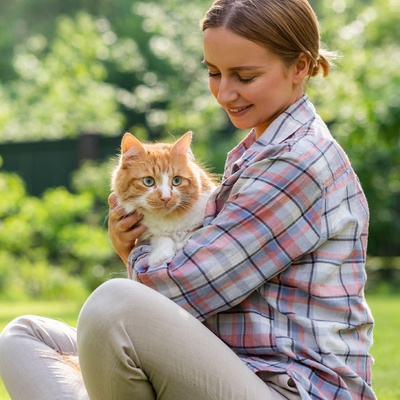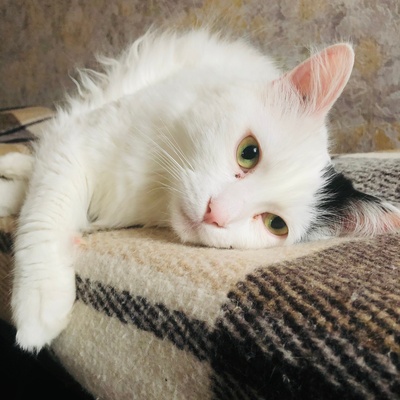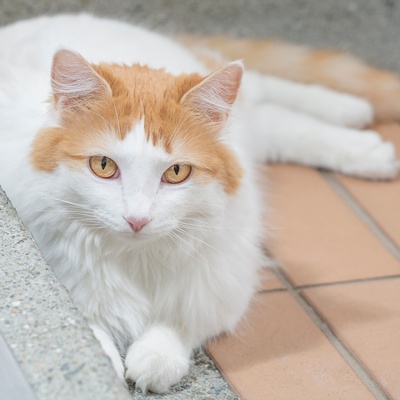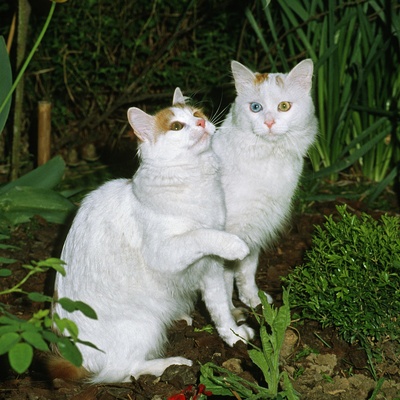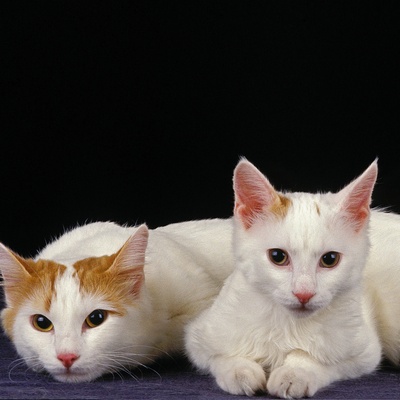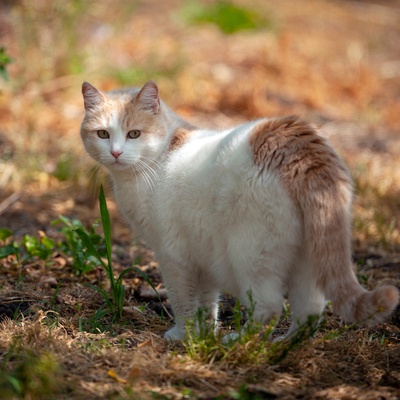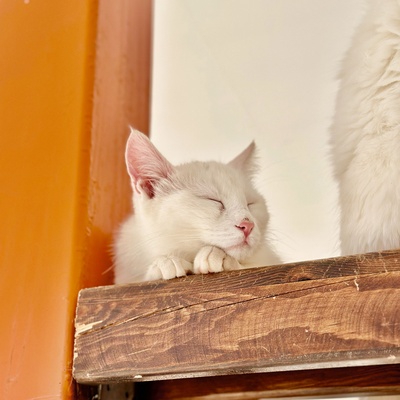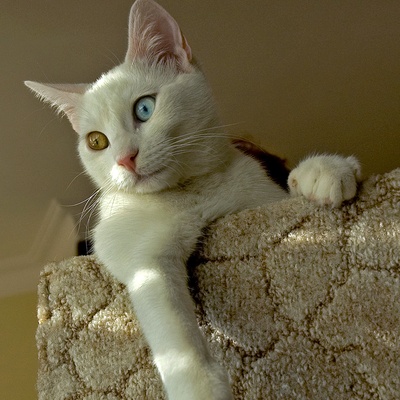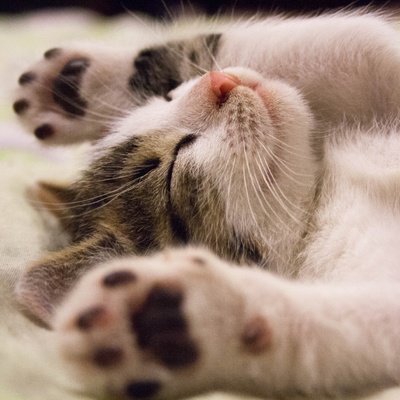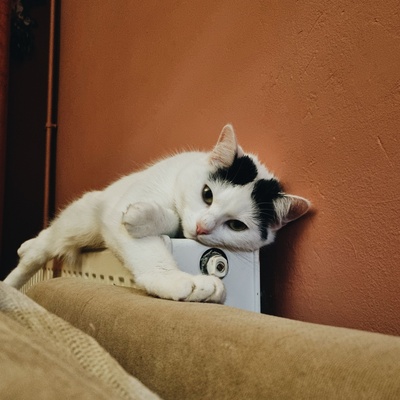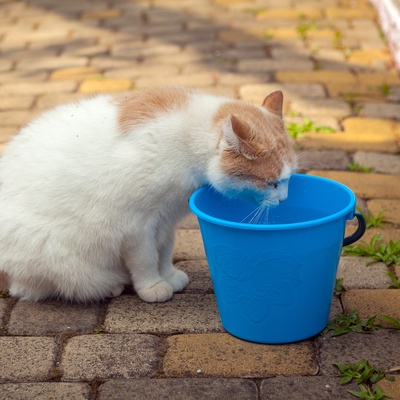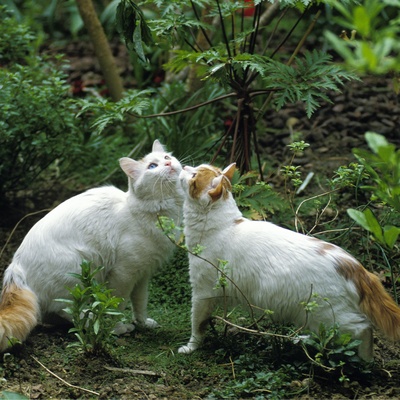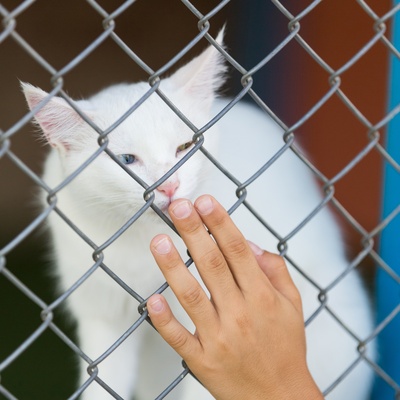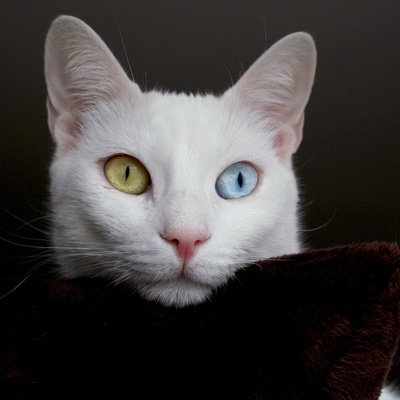Introducing the Turkish Van Cat
Discover everything there is to know about the Turkish Van Cat : its characteristics, its behaviour, its training and how much one costs.
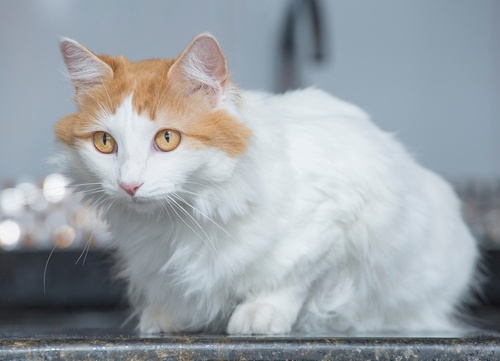
Discover everything there is to know about the Turkish Van Cat : its characteristics, its behaviour, its training and how much one costs.
The Turkish Van Cat stands out as an extraordinary breed. Originating from the Lake Van region in Turkey, this breed is celebrated not just for its striking appearance but also for its unusual affinity for water. Their semi-long, water-resistant coat further complements their swimming capabilities.
Beyond their physical attributes, Turkish Van Cats are known for their lively and affectionate nature, often forming strong bonds with their owners. Despite their playful disposition, they maintain an air of independence, making them fascinating companions. Welcoming a Turkish Van Cat into your home promises a blend of joy, adventure, and the unique sight of a cat who truly enjoys water.
This selection outlines the unique features of the Turkish Van Cat breed.
The Turkish Van Cat is a large breed, generally reaching heights up to 14 inches and weighing between 10 to 20 pounds.
The Turkish Van Cat has a semi-long, water-resistant coat, which is one of its most distinctive features.
The Turkish Van Cat is not specifically known to be hypoallergenic. Prospective owners with allergies should spend time with the breed before making a decision.
The coat of a Turkish Van Cat is primarily white with colored markings on the head and tail. Colors can range from red and cream to black and blue.
Turkish Van Cats are adaptable to various living environments but thrive in spaces where they can be active and explore.
Known for their affectionate and sociable nature, Turkish Van Cats get along well with children and other pets, making them excellent family companions.
Turkish Van Cats are generally healthy, but like all breeds, they can be predisposed to certain genetic conditions.
With their intelligent and curious nature, Turkish Van Cats can be responsive to training, especially when it's started early and approached with patience and positivity.
We can help you!
Every cat has its own character and specific needs. Making the right choice will ensure his well-being and yours.
Thanks to our quiz, you'll know which breed is right for you, depending on your lifestyle, expectations and many other criteria.
Don't wait any longer and take the quiz to find out the answer!
The Turkish Van Cat is distinguished by its love for water, an atypical trait for felines. Like a sailor in the realm of cats, its affinity for swimming sets it apart.
The Turkish Van Cat is on the larger side among domestic cats, showcasing its majestic presence. Males are notably larger than females, with males weighing between 15 to 20 pounds and females slightly less.
These cats are considered late bloomers, achieving their full size and robust build by 3-4 years of age. Their physical prowess is complemented by a broad frame, substantial musculature, and an impressively long tail, making them a striking figure in any home.
The Turkish Van Cat is known for its semi-long, water-resistant coat, which is one of its most distinctive and enchanting features. This unique coat has a soft, cashmere-like texture, making it delightful to the touch.
Despite its length, the coat does not mat easily, thanks to its silky texture, which also contributes to the breed's love for water.
The Turkish Van Cat's coat is celebrated for its specific color pattern, known as "Van" pattern, where color is primarily restricted to the head and tail. The vast majority of their body remains a pristine white.
Typical color markings include red, cream, black, and blue, with the occasional tabby or tortoiseshell patterns adorning their head and tail. This striking contrast gives the Turkish Van Cat a distinct and captivating appearance, setting it apart from other breeds.
The Turkish Van Cat's allure isn't just skin-deep; its robust and large physique sets it apart. This breed moves with an elegant and powerful gait, indicative of its strong swimming capabilities. Their ears are of medium size, set high on the head, and slightly rounded at the tips, complementing their broad, muscular body.
The general shape is well-balanced with a sturdy bone structure and well-developed musculature, giving them a majestic appearance. The muzzle is moderately long and well-defined, leading to an expressive face. Their large, almond-shaped eyes can be amber, blue, or even odd-colored, adding to their mystique. These combined physical traits make the Turkish Van Cat a breed of distinct beauty and grace.
Despite their semi-long coat, Turkish Van Cats are relatively low maintenance in terms of grooming. A weekly brushing is usually sufficient to keep their coat in good condition, though during shedding periods, increasing the frequency can help manage loose hair.
Bathing should be done sparingly, only when necessary, using a cat-appropriate shampoo. While Turkish Van Cats are known for their unusual fondness for water, it's important to ensure that any bathing is a positive experience. Regular grooming not only helps maintain their striking appearance but also strengthens the bond between cat and owner.
The Turkish Van Cat is known for its energetic and affectionate demeanor, making it an engaging companion for families.
The Turkish Van Cat sets itself apart with its remarkable affinity for water, often engaging in playful splashes, which is rare among felines. This breed is highly sociable, quickly forming strong bonds with its owners and not hesitating to follow them around the home, seeking attention and interaction.
Despite their playful nature, Turkish Van Cats cherish their cuddle time, exhibiting a range of vocalizations from purrs to meows that signal their contentment. They thrive in environments where they receive ample attention, embodying the balance between independence and companionship.
Exhibiting a serene and patient temperament, the Turkish Van Cat is an ideal family pet, renowned for its sociable nature and compatibility with children, dogs, and other cats. Their tranquility and patience are hallmarks of their character, and when overwhelmed, they prefer to retreat and relax in solitude rather than show aggression.
This breed's gentle demeanor, coupled with its striking appearance and unique love for water, makes the Turkish Van Cat a cherished member of any household, emphasizing the importance of a nurturing and attentive environment.
The Turkish Van Cat is remarkably adaptable, thriving in a variety of living environments as long as they receive enough attention from their owners. These cats prefer spaces where they can indulge in their playful and aquatic tendencies, making access to safe water features or spacious areas a plus. Their need for activity and engagement means they benefit from environments that can cater to their energetic lifestyle.
If you're concerned about losing track of your cat, you can equip him with a GPS collar that will allow you to follow his activities and find him if he runs away.
Characterized by their lively and inquisitive nature, Turkish Van Cats require stimulating activities that cater to their high energy levels and intelligence. Engaging in interactive play with their owners not only enhances their physical well-being but also strengthens their emotional bond.
Without sufficient stimulation, these cats may resort to mischievous behavior. Providing quiet, comfortable resting areas is also essential for them to recharge after their adventurous exploits.
Early and consistent training is crucial for Turkish Van Cats, emphasizing the importance of establishing good habits from a young age. Training should be grounded in positive reinforcement, patience, and firmness, ensuring that desired behaviors are rewarded and reinforced.
These intelligent felines respond well to play-based learning, making it an effective tool for both mental stimulation and preventing undesirable behaviors. Consistency throughout their training will solidify a strong foundation for their development into well-adjusted adult cats.
Choosing a cat that matches your personality and lifestyle will ensure your well-being and his!
The Turkish Van Cat is an exceptionally resilient and robust breed, known for its overall good health and lack of breed-specific health issues.
The Turkish Van Cat is celebrated for its sturdy health and vitality, generally maintaining good health throughout its life. While this breed is less prone to illness, it's important to be aware of common feline conditions such as hypertrophic cardiomyopathy and polycystic kidney disease, which can affect cats broadly.
Conducting a DNA test can help identify any predisposition to such hereditary diseases, ensuring early prevention or management. Regular veterinary visits are crucial for keeping up with vaccinations against common diseases like feline distemper and rabies, and for overall health monitoring to maintain their robust health.
The Turkish Van Cat, known for its large, muscular build, requires a diet that supports its energy levels and maintains its health. A high-quality kibble should serve as the foundation of their diet to sustain their robust physique and vitality. Incorporating green vegetables rich in water can complement the kibble, promoting hydration and supporting the cat's renal health, which is essential for a breed that loves water as much as the Turkish Van does.
Turkish Van Cats are known for their relatively slow growth rate, reaching their full size and muscular maturity around 3 to 4 years of age. Their diet needs to be carefully managed during this growth phase. Sticking to the same high-quality kibble brand ensures dietary consistency, and feeding them at regular times aids in preventing digestive issues, supporting a smooth growth process.
Despite their love for lounging and swimming, Turkish Van Cats are inherently active and playful. Without sufficient exercise and a controlled diet, they may be prone to weight gain. Encouraging regular playtime, running, and jumping is crucial for keeping them in shape and preventing obesity. Interactive play sessions not only help in maintaining their physical health but also provide mental stimulation and strengthen the bond between the cat and its owner, ensuring a happy, healthy life for this unique breed.
The Turkish Van Cat is a cherished and unique breed, admired for its distinctive characteristics and rarity. There are a limited number of breeders specializing in this breed, highlighting the importance of careful consideration before adoption.
Purebred Turkish Van Cats are typically bred by professional breeders or in dedicated catteries. Prospective owners should visit the breeding sites to inspect the living conditions firsthand and ensure they meet high standards.
From June 10, 2024 you must have your cat microchipped by the age of 20 weeks old and register its details in a relevant database such as Petlog or The Governing Council of the Cat Fancy (GCCF). This is a legal requirement in Britain, and failure to comply could result in a fine of
.
Don't forget to ask the breeder for health examinations and DNA tests on the kitten and parents, as this is crucial to identify any hereditary health issues.
The cost of a Turkish Van Cat can vary significantly based on factors such as lineage, pedigree, breeder's reputation, and the cat's age. Generally, the price range for a Turkish Van kitten can be from
to
reflecting their rarity and the care taken in their breeding.
Adopting an adult Turkish Van might present a more cost-effective option, with prices potentially lower. Beyond the initial purchase, maintaining a Turkish Van Cat entails ongoing expenses for health care, nutrition, and well-being, with annual costs potentially ranging from
to
. Given their long lifespan and engaging personality, adopting a Turkish Van Cat is a long-term commitment that requires thoughtful consideration and planning.
Choosing a cat that matches your personality and lifestyle will ensure your well-being and his!
To access the most relevant information, suitable payment methods, and delivery in your region, please select the website corresponding to your country.

